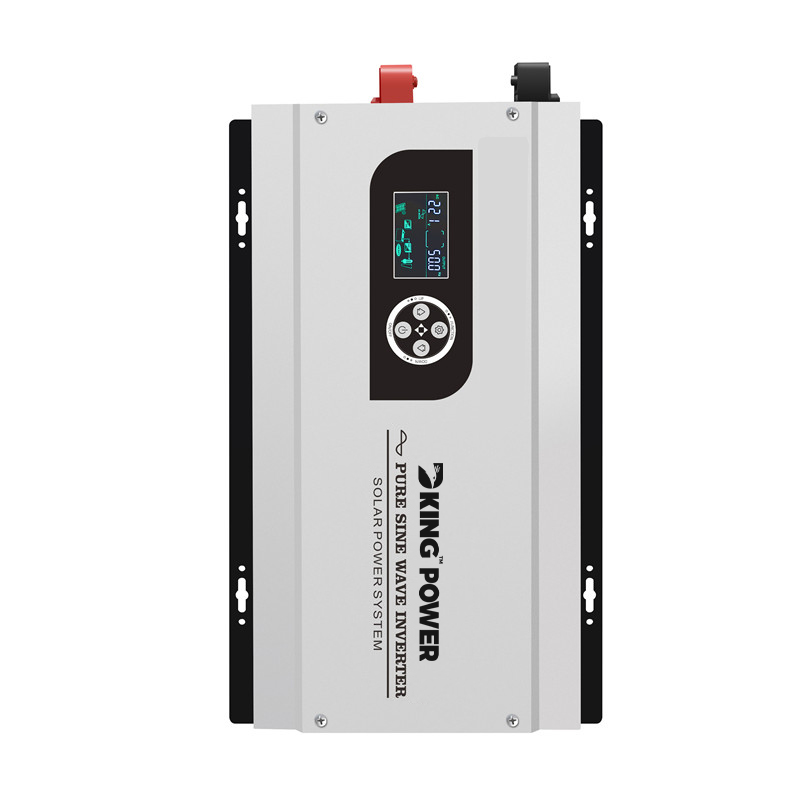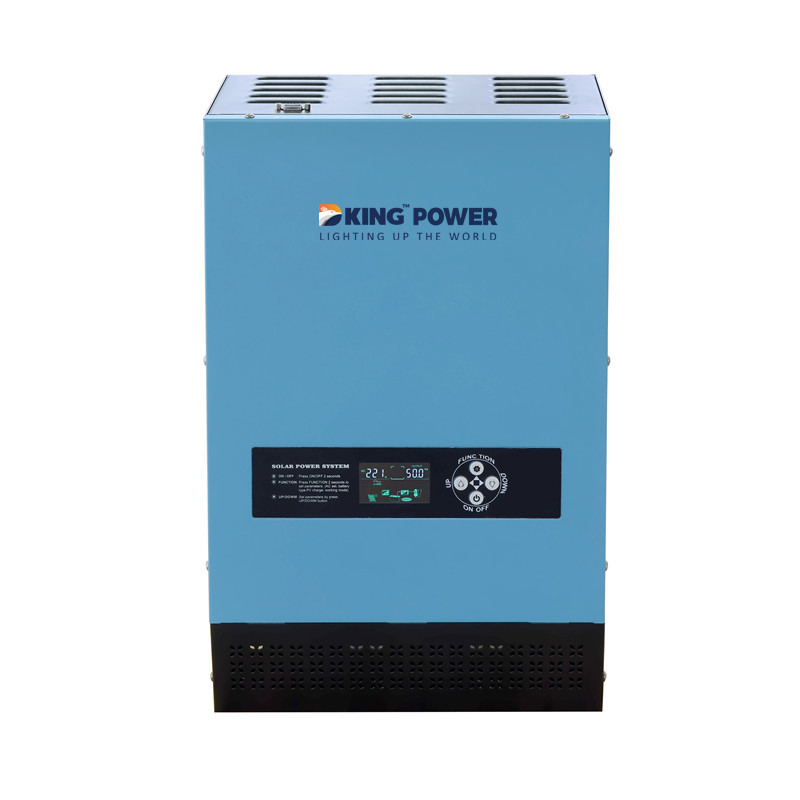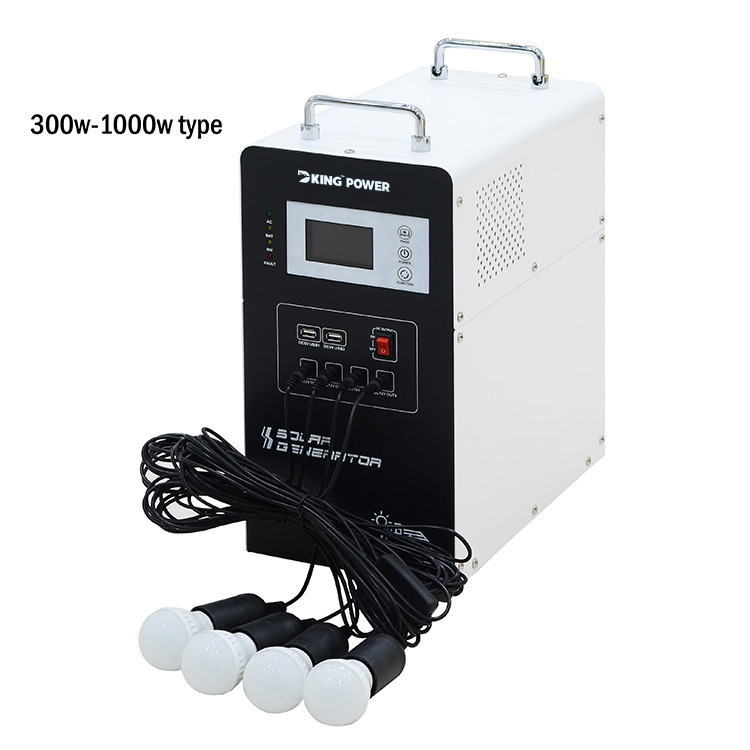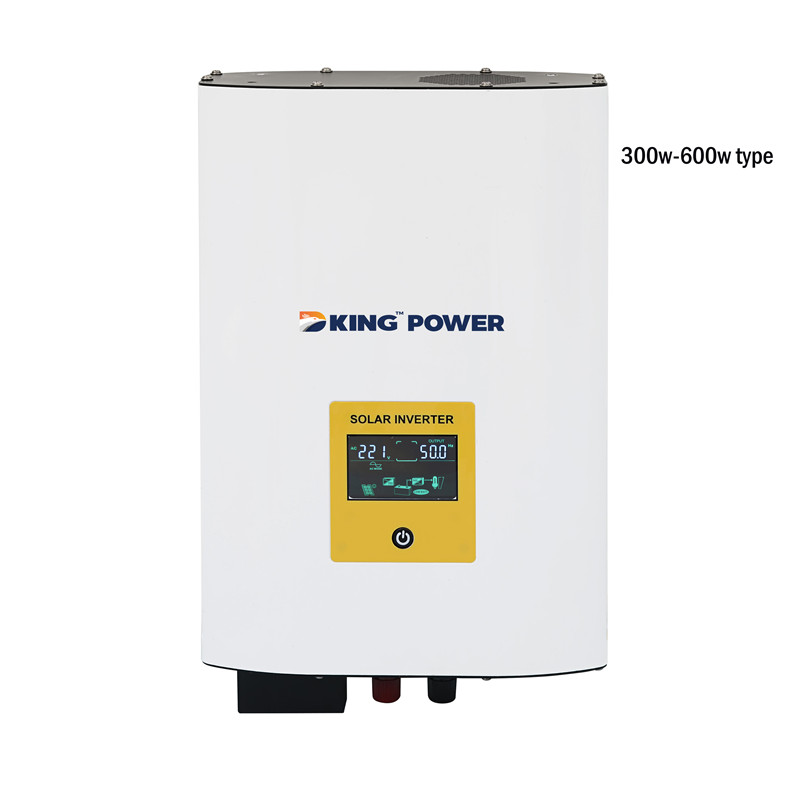DKDP-PURE SINGLE PHASE SINGLE PAHASE SOLAR INVERTER 2 IN 1 WITH MPPT CONTROLLER
Why do solar cells only produce direct current?
When the sun shines on the surface of the solar cell, it will stimulate the flow of electrons, thus generating an electric current. Now, these electrons only flow in one direction.
One-way electron flow generates direct current or direct current. Therefore, solar cells can only produce direct current, not alternating current. Otherwise, the inverter will not be needed in this case.
Why do we use AC instead of DC in our home?
There are two main reasons why we use AC instead of DC at home. Therefore, we cannot directly use the DC output of solar cells and solar panels. They are as follows:
1. Most of our household outlets and appliances use alternating current.
2. Power from the public grid is also in the form of alternating current.
Household sockets and appliances use AC instead of DC.
DC is not something that we can directly use to power most household equipment. This is the main reason why we need to use inverters to benefit from solar energy.
In the daytime, solar energy can supply power for our family with the help of inverters. Inverters can convert DC voltage and electric energy into AC power, enabling us to use household appliances. In the case of solar grid-connected power generation system, when the solar energy exceeds the energy demand of our family, the surplus power will be output to the grid.
The distribution network uses AC instead of DC.
Unless you want to leave the grid, you need to get electricity from the public grid to use household appliances. The way they transmit electricity from power plants is through transmission and distribution lines. These lines use high voltage and low current AC power to minimize electrical losses.
Therefore, your solar panel system needs to be adjusted according to the power demand of your home, that is, the form of alternating current. When you connect the grid-connected solar system, you also need to synchronize its output power to the grid. Now, this is another reason why solar cells and solar panels need inverters.
Parameter
| Model: DP/DP-T |
10212/24/48 |
15212/24/48 |
20212/24/48 |
30224/48 |
40224/48 |
50248 |
60248 |
70248 |
|
| Rated Power |
1000W |
1500W |
2000W |
3000W |
4000W |
5000W |
6000W |
7000W |
|
| Peak Power(20ms) |
3000VA |
4500VA |
6000VA |
9000VA |
12000VA |
15000VA |
18000VA |
21000VA |
|
| Start Motor |
1HP |
1.5HP |
2HP |
3HP |
3HP |
4HP |
4HP |
5HP |
|
| Battery Voltage |
12/24/48VDC |
24/48VDC |
24/48VDC |
48VDC |
|||||
| Size(L*W*Hmm) |
555*297*184 |
615*315*209 |
|||||||
| Packing Size(L*W*Hmm) |
620*345*255 |
680*365*280 |
|||||||
| N.W.(kg) |
12 |
13 |
15.5 |
18 |
23 |
24.5 |
26 |
27.5 |
|
| G.W.(kg)(Carton Packing) |
14 |
15 |
17.5 |
20 |
25.5 |
27 |
28.5 |
30 |
|
| Installation Method |
Wall-Mounted |
||||||||
|
Parameter |
|||||||||
|
Input |
DC Input Voltage Range |
10.5-15VDC(Single battery voltage) |
|||||||
| AC Input Voltage Range |
85VAC~138VAC(110VAC)/ 95VAC~148VAC(120VAC / 170VAC~275VAC(220VAC / 180VAC~285VAC(230VAC) |
||||||||
| AC Input Frequency Range |
45Hz~55Hz(50Hz) / 55Hz~65Hz(60Hz) |
||||||||
| Max AC charging current |
0~30A(Depending on the model) |
||||||||
| AC charging method |
Three-stage (constant current, constant voltage, floating charge) |
||||||||
|
Output |
Efficiency(Battery Mode) |
≥85% |
|||||||
| Output Voltage(Battery Mode) |
110VAC±2% / 120VAC±2% / 220VAC±2% / 230VAC±2% / 240VAC±2% |
||||||||
| Output Frequency(Battery Mode) |
50/60Hz±1% |
||||||||
| Output Wave(Battery Mode) |
Pure Sine Wave |
||||||||
| Efficiency(AC Mode) |
>99% |
||||||||
| Output Voltage(AC Mode) |
110VAC±10% / 120VAC±10% / 220VAC±10% / 230VAC±10% / 240VAC±10% |
||||||||
| Output Frequency(AC Mode) |
Follow input |
||||||||
| Output waveform distortion (Battery Mode) |
≤3%(Linear load) |
||||||||
| No load loss(Battery Mode) |
≤0.8% rated power |
||||||||
| No load loss(AC Mode) |
≤2% rated power( charger does not work in AC mode) |
||||||||
| No load loss(Energy saving Mode) |
≤10W |
||||||||
|
Battery Type |
VRLA Battery |
Charge Voltage :14V; Float Voltage:13.8V( 12V system; 24V system x2 ; 48V system x4) |
|||||||
| Customize battery |
Charging and discharging parameters of different types of batteries can be customized according to user requirements |
||||||||
|
Protection |
Battery undervoltage alarm |
Factory default: 11V(12V system; 24V system x2; 48V system x4) |
|||||||
| Battery undervoltage protection |
Factory default: 10.5V(12V system; 24V system x2; 48V system x4) |
||||||||
| Battery overvoltage alarm |
Factory default: 15V(12V system; 24V system x2; 48V system x4) |
||||||||
| Battery overvoltage protection |
Factory default: 17V(12V system; 24V system x2; 48V system x4) |
||||||||
| Battery overvoltage recovery voltage |
Factory default: 14.5V(12V system; 24V system x2; 48V system x4) |
||||||||
| Overload power protection |
Automatic protection (battery mode), circuit breaker or insurance (AC mode) |
||||||||
| Inverter output short circuit protection |
Automatic protection (battery mode), circuit breaker or insurance (AC mode) |
||||||||
| Temperature protection |
>90°C(Shut down output) |
||||||||
|
Alarm |
A |
Normal working condition, buzzer has no alarm sound |
|||||||
| B |
Buzzer sounds 4 times per second when battery failure, voltage abnormality, overload protection |
||||||||
| C |
When the machine is turned on for the first time, the buzzer will prompt 5 when the machine is normal |
||||||||
|
Inside Solar controller |
Charging Mode |
PWM or MPPT |
|||||||
| Charging current |
10A~60A(PWM or MPPT) |
10A~60A(PWM ) / 10A~100A(MPPT) |
|||||||
| PV Input Voltage Range |
PWM: 15V-44V(12V system); 30V-44V(24V system); 60V-88V(48V system) |
||||||||
| Max PV Input Voltage(Voc) (At the lowest temperature) |
PWM: 50V(12V/24V system); 100V(48V system) / MPPT: 150V(12V/24V/48V system) |
||||||||
| PV Array Maximum Power |
12V system: 140W(10A)/280W(20A)/420W(30A)/560W(40A)/700W(50A)/840W(60A)/1120W(80A)/1400W(100A); |
||||||||
| Standby loss |
≤3W |
||||||||
| Maximum conversion efficiency |
>95% |
||||||||
| Working Mode |
Battery First/AC First/Saving Energy Mode |
||||||||
| Transfer Time |
≤4ms |
||||||||
| Display |
LCD(External LCD Display(Optional)) |
||||||||
| Thermal method |
Cooling fan in intelligent control |
||||||||
| Communication(Optional) |
RS485/APP(WIFI monitoring or GPRS monitoring) |
||||||||
|
Environment |
Operating temperature |
-10℃~40℃ |
|||||||
| Storage temperature |
-15℃~60℃ |
||||||||
| Noise |
≤55dB |
||||||||
| Elevation |
2000m(More than derating) |
||||||||
| Humidity |
0%~95%, No condensation |
||||||||

What service we offer?
1. Design service.
Just let us know the features you want, such as the power rate, the applications you want to load, how many hours you need the system to work etc. We will design a reasonable solar power system for you.
We will make a diagram of the system and the detailed configuration.
2. Tender Services
Assist guests in preparing bid documents and technical data
3. Training service
If you a new one in the energy storage business, and you need a training, you can come our company to learn or we send technicians to help you to train your stuff.
4. Mounting service& maintenance service
We also offer mounting service and maintenance service with seasonable & affordable cost.

5. Marketing support
We give big support to the customers who agent our brand "Dking power".
we send engineers and technicians to support you if necessary.
we send certain percent extra parts of some of the products as replacements freely.
What is the minimum and max solar power system you can produce?
The minimum solar power system we produced is around 30w, such as solar street light. But normally the minimum for home use is 100w 200w 300w 500w etc.
Most of people prefer 1kw 2kw 3kw 5kw 10kw etc for home use, normally it is AC110v or 220v and 230v.
The max solar power system we produced is 30MW/50MWH.


How is your quality?
Our quality is very high,because we use very high quality materials and we make rigorous tests of the materials. And we have very strict QC system.

Do you accept customized producing?
Yes. just tell us what you want. We customized R&D and producing energy storage lithium batteries, low temperature lithium batteries, motive lithium batteries, off high way vehicle lithium batteries, solar power systems etc.
What is the lead time?
Normally 20-30 days
How you guarantee your products?
During the warranty period, if it is the product reason, we will send you replacement of the product. Some of the products we will send you new one with next shipping. Different products with different warranty terms. But before we sending, we need a picture or video to make sure it is the problem of our products.
workshops











Cases
400KWH (192V2000AH Lifepo4 and solar energy storage system in Philippines )

200KW PV+384V1200AH (500KWH) solar and lithium battery energy storage system in Nigeria

400KW PV+384V2500AH (1000KWH) solar and lithium battery energy storage system in America.



Certifications














